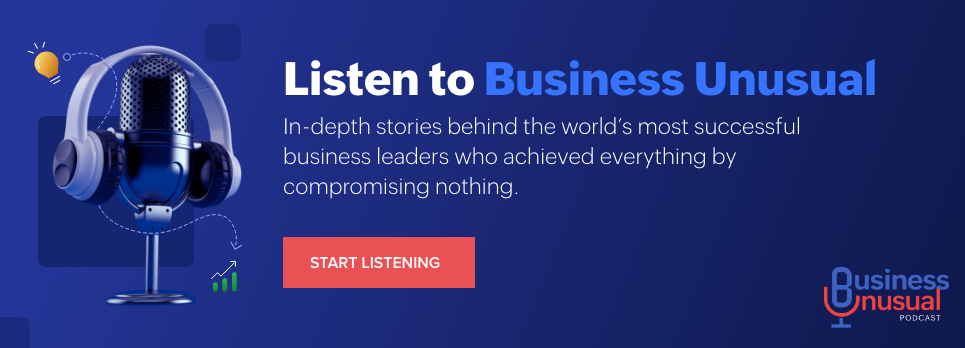
Guest author Hardeep Chawla, Zoho's Director of Enterprise Sales, is a seasoned SaaS sales leader with over a decade of experience driving growth and building high-performing teams. Known for his strategic vision and consultative approach, he excels in guiding enterprises through complex buying journeys and digital transformations while fostering long-term customer relationships.
From delivering more consistent customer journeys to offering deeper personalization across touchpoints, automation can help businesses meet a range of big-picture CX goals. Through a strategic implementation of customer experience automation (CXA) alongside advanced technologies (such as AI and ML), businesses have achieved significant cost savings, stronger customer relationships, and increased CLVs.
Unfortunately, while most decision-makers have incorporated some level of automation into their customer journeys, half of large companies say they're still struggling to achieve automation success. Meanwhile, roughly 40% of businesses are unhappy with the expense of implementing automation tools, as well as the cost savings and analytical benefits their implementations actually deliver.
These statistics are a clear sign that successfully leveraging automation for CX takes more than an investment in the right software tools. It takes proactive strategies that align process automations with a company's overarching CX initiatives. By developing these types of strategies, your marketing and sales teams can avoid common automation setbacks that lead to budget overrun and customer dissatisfaction, among other consequences.
Identifying high-impact opportunities for automation
In most organizations, opportunities for automation are easy to spot—but automating for the sake of automating rarely benefits a company's bottom line. More frequently, it leads to generic customer interactions, increased technological complexity, and snowballing expenses.
For a more impactful approach to automation, encourage sales and marketing leadership to analyze your company's most critical CX goals—and the processes that are most integral to their success. Internal data can help identify which key processes are a source of frequent errors and inefficiencies, offering an ideal jumping-off point for CXA adoption.
In addition to helping optimize core CX processes, a selective approach to automation gives your organization tighter control over the customer journey, making it easier to balance technology-driven tasks with human intervention. This is crucial for delivering top-tier CX, as many customers still prefer live interactions at various touchpoints, especially when it comes to support.
Evolving automated offerings to meet customer expectations
Customer expectations are influenced by a variety of factors, from demographics to market conditions. This means that, to optimize the customer experience, businesses must be tuned in to the evolving needs of their audience—and prepared to pivot to new strategies in response. For companies running CXA, this can be a complicated undertaking, especially if they haven't prioritized the flexibility of their software solutions.
When your solutions offer a streamlined process for modifying automated workflows, it's easier for stakeholders to craft timely and relevant customer touchpoints. Your sales agents, for instance, could increase engagement by moving automated welcome messages to a platform where leads have become more active. And your support team could improve customer satisfaction by configuring a chatbot to handle questions about new product upgrades.
Knowing when and how to adjust automations for the greatest possible impact typically requires access to comprehensive data and analytics. A centralized platform that pulls data from across departments can help identify key trends in customer behavior and preferences. As a result, stakeholders are better equipped to keep company offerings dynamic—even when they're primarily driven by automation. This is essential for bringing deeper levels of personalization to every interaction, which, in turn, leads to stronger and more loyal customer relationships.
Vetting software to maximize value
There are quite a few factors that can contribute to budget overrun when it comes to CXA. Some common (and expensive) CXA mistakes organizations make include:
Adopting automation tools that are difficult to integrate across the tech stack. This can force a company to invest in additional software solutions or add-ons to make CXA configurations work properly.
Choosing tools that aren't user-friendly and intuitive. When this is the case, team leaders may need to invest in training programs to help stakeholders leverage solutions effectively.
Failing to introduce robust security protocols alongside automation. Organizations that make this mistake risk violating consumer privacy laws (such as GDPR and CCPA), which can result in substantial financial penalties.
Fortunately, most unnecessary expenses can be prevented by a comprehensive and data-driven software vetting process. Opting for tools that are both scalable and flexible eliminates the need to acquire new solutions as automation initiatives expand. Further, tools that are equipped with low-code functionality can empower stakeholders to customize automations without additional training (or additional IT staffing).
By leveraging internal data and reports, you can determine which software features and capabilities will drive the most value for your company. This helps to streamline the vetting process, and reveals which solutions can deliver the highest ROI in CXA.
Staying focused on the big picture
In the coming years, the popularity of automation is expected to continue growing. The potential use cases for CXA will likely expand—but this will only make it more crucial for businesses to stay focused on their data, and be precise in their efforts to identify ways automation can actually improve the customer experience.
This selective, data-driven approach to CXA will be a key differentiator between businesses that see their CX initiatives flounder, and those that use automation to secure stronger customer relationships and long-term business health.



